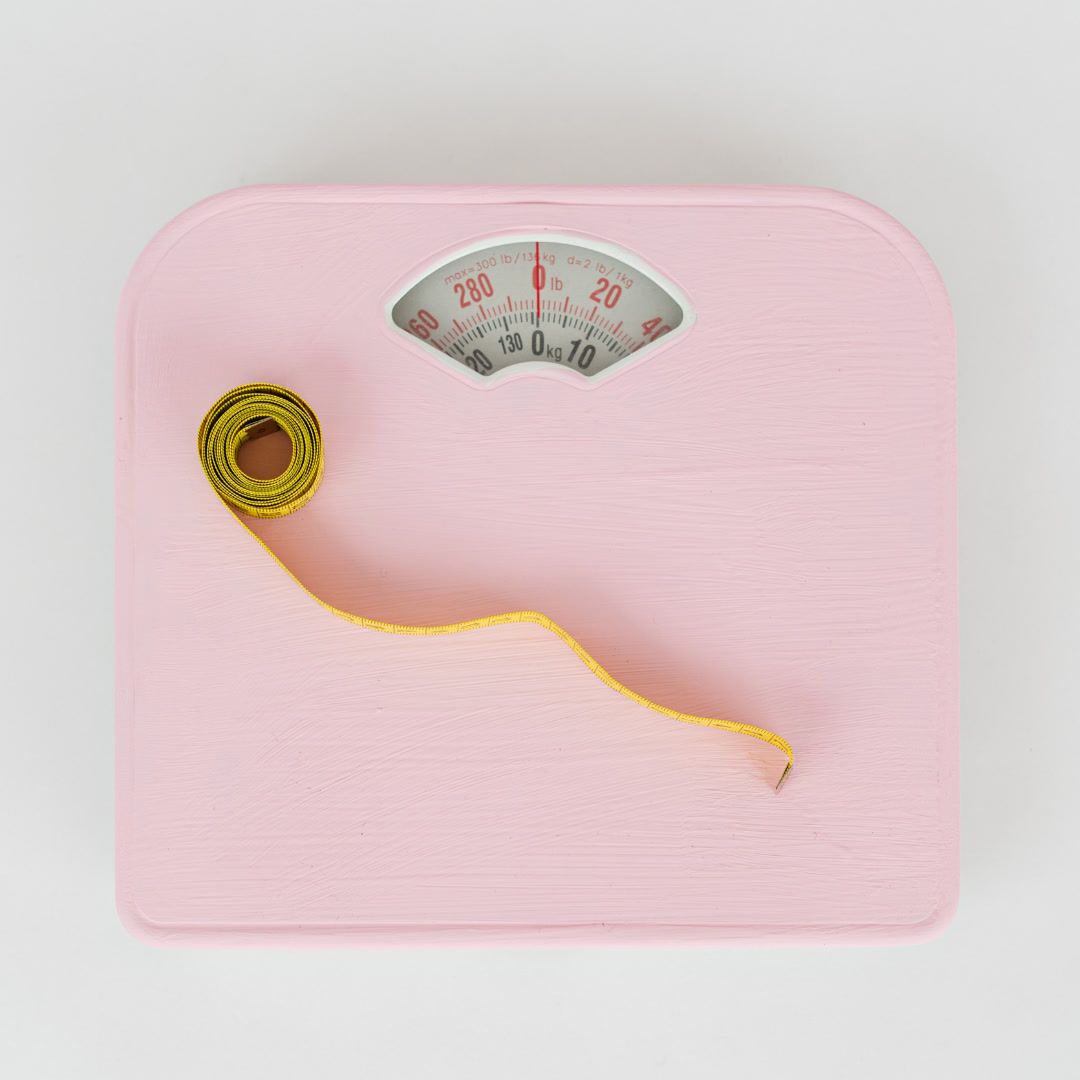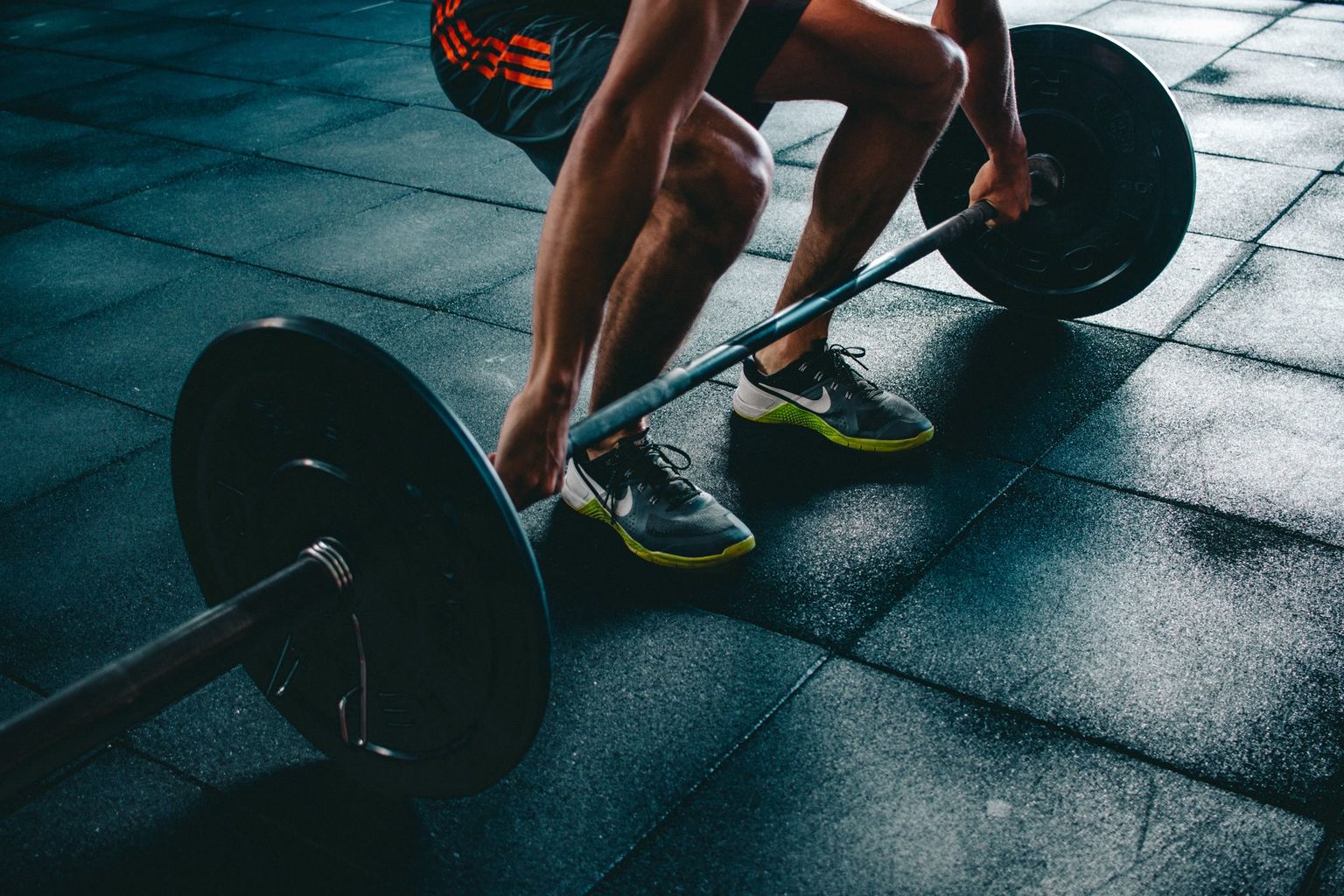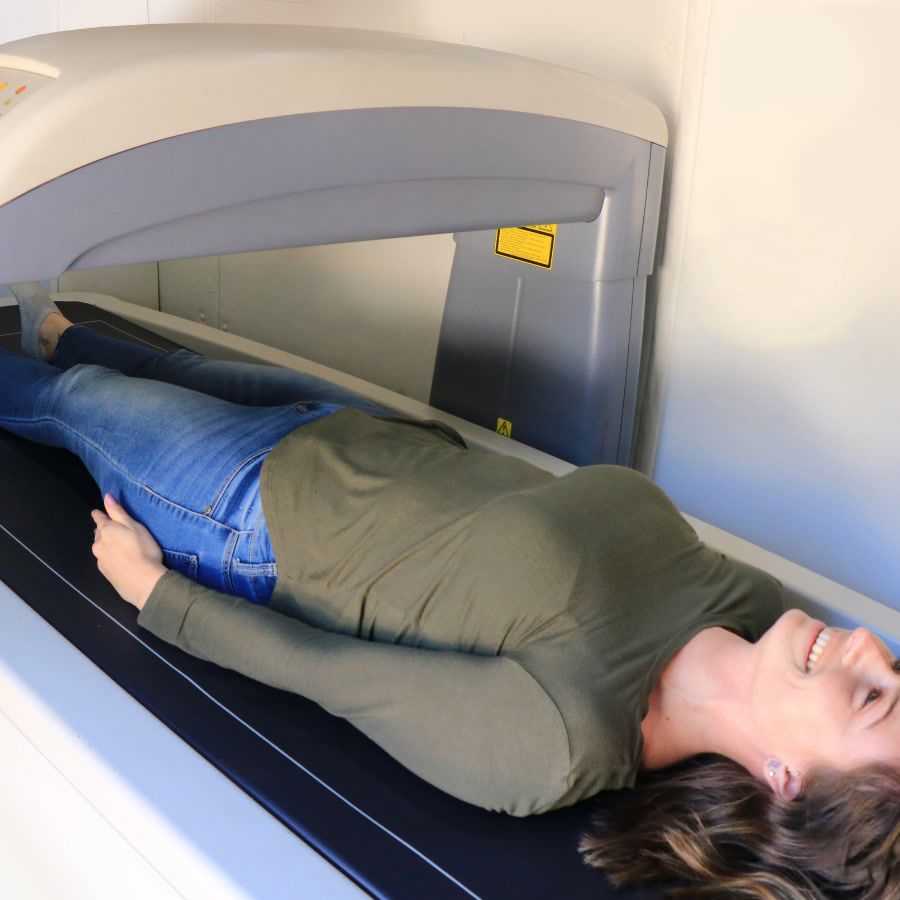Female Muscle Building: Science-Backed Guide and Programs

Female Muscle Building: Science-Backed Guide + Programs
If you’ve ever worried that lifting heavy will make you “bulky,” good news. Female muscle building follows the same core rules as men’s: progressive resistance and adequate protein. Women gain similar relative muscle when training is matched, even if absolute pounds are smaller due to lower starting lean mass (systematic review with meta-analysis). Put simply: progressive overload + protein + recovery lead to lean, defined muscle without unwanted bulk.
This guide gives you everything you need to start—and keep—building muscle:
- Myth-busting (what actually drives hypertrophy for women)
- Exact protein targets and meal-building steps
- 4- and 6-week training templates for beginner, intermediate, and advanced lifters
- Supplements that are worth it (and how to dose them)
- Menopause-specific coaching for muscle and bone
- How to track progress with precision using a BodySpec DEXA scan
Pro tip: You’ll see changes faster when you measure the right things. A BodySpec DEXA scan quantifies lean mass, fat mass, regional muscle balance, and visceral fat. If possible, book a baseline before you begin and consider re-scanning every 8–12 weeks (book your baseline DEXA scan).
Myth-busting: Will lifting make me bulky?
- Women can build muscle at similar relative rates to men when training is equated; the difference is mostly absolute pounds, since men start with more lean mass.
- Acute spikes in hormones after workouts aren’t what grow muscle. Mechanical tension (progressive overload), adequate volume, and recovery are the primary drivers (evidence-guided primer on hormones and hypertrophy).
- Strength training supports longevity and metabolic health. Observational data in women link 2–3 days/week of muscle-strengthening activities with lower cardiovascular mortality (NPR report on recent findings).
Bottom line: “Bulky” comes from large calorie surpluses over time—not from touching a barbell. Train smart, eat for your goal, and you’ll build lean, defined muscle.
What really builds muscle for women (the 3 levers)
-
Training: Apply progressive overload to the same movements week after week—adding weight, reps, or sets while keeping form tight. Two variables determine your stimulus: training volume (the number of hard, working sets you perform for each muscle each week) and how close those sets get to fatigue (stopping ~0–2 reps shy of failure on most sets).
-
Protein and calories: Aiming for 1.6–2.2 g/kg/day protein, distributed across 3–4 meals of ~0.25–0.4 g/kg each (about 20–40 g), maximizes muscle protein synthesis. Each serving should supply ~700–3,000 mg leucine (JISSN position stand).
-
Recovery: Sleep 7–9 hours, manage stress, and take rest days. Your muscles grow between sessions, not during them.
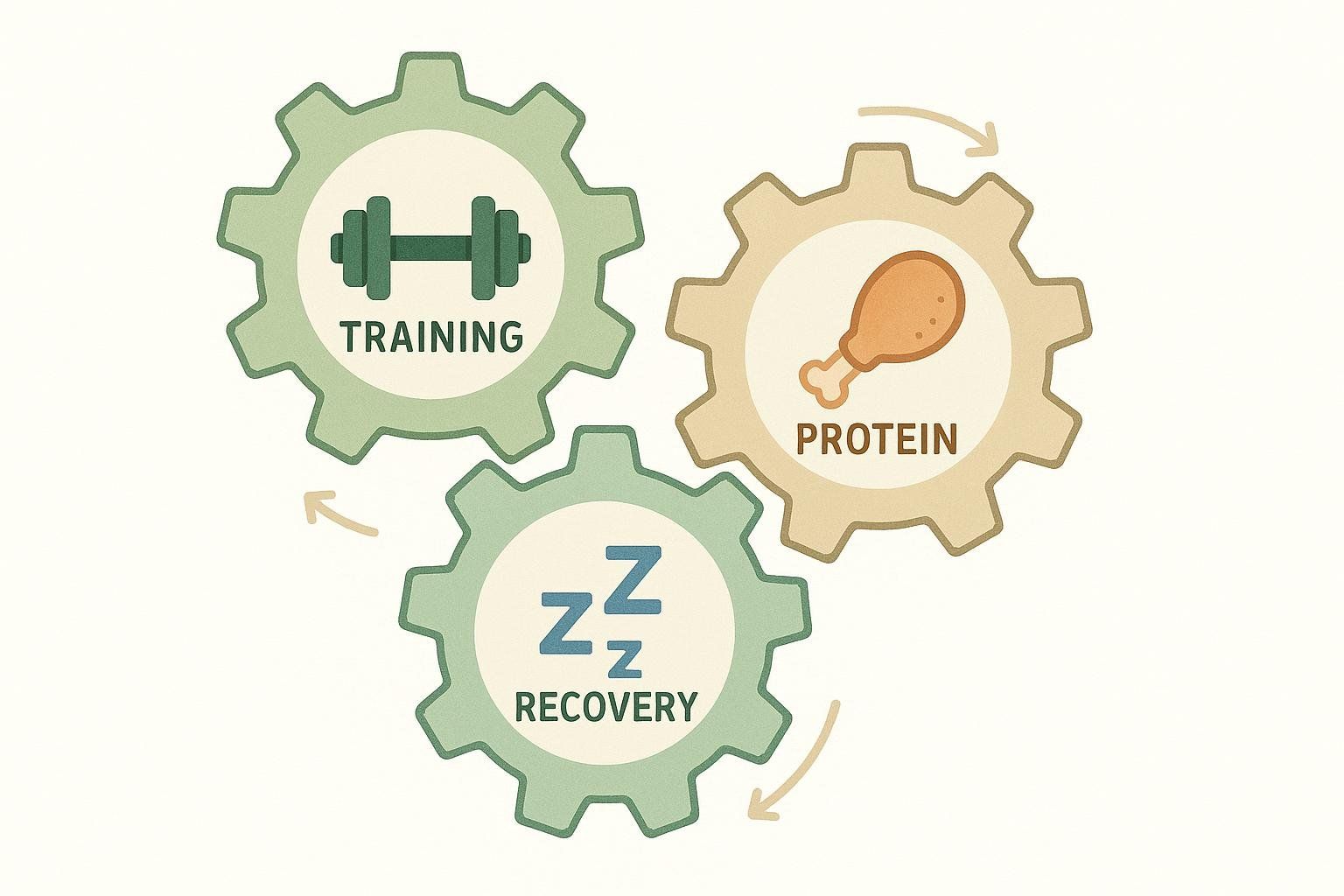
Helpful refreshers:
- The basics of macros: The Ultimate Guide to Tracking Macros
- Recomp vs bulk: Body Recomposition 101 and Lean Bulk Essentials
How much protein do women actually need to build muscle?
- Daily: 1.6–2.2 g/kg body weight (0.7–1.0 g/lb) for most lifters.
- Per meal: ~0.25–0.4 g/kg (20–40 g) of high-quality protein with adequate leucine to “turn on” muscle protein synthesis.
- Over 50? Protein needs often trend higher relative to body weight due to “anabolic resistance.” Many women under-eat protein and benefit from spreading intake across the day (NPR nutrition overview).
Simple starting targets by body weight:
- 120 lb (54 kg): 85–120 g/day
- 150 lb (68 kg): 105–150 g/day
- 180 lb (82 kg): 130–180 g/day
Tip: Hit your protein, then adjust carbs and fats around training tolerance and preferences. Carbs fuel performance; fats (20–30% of calories) support hormones.
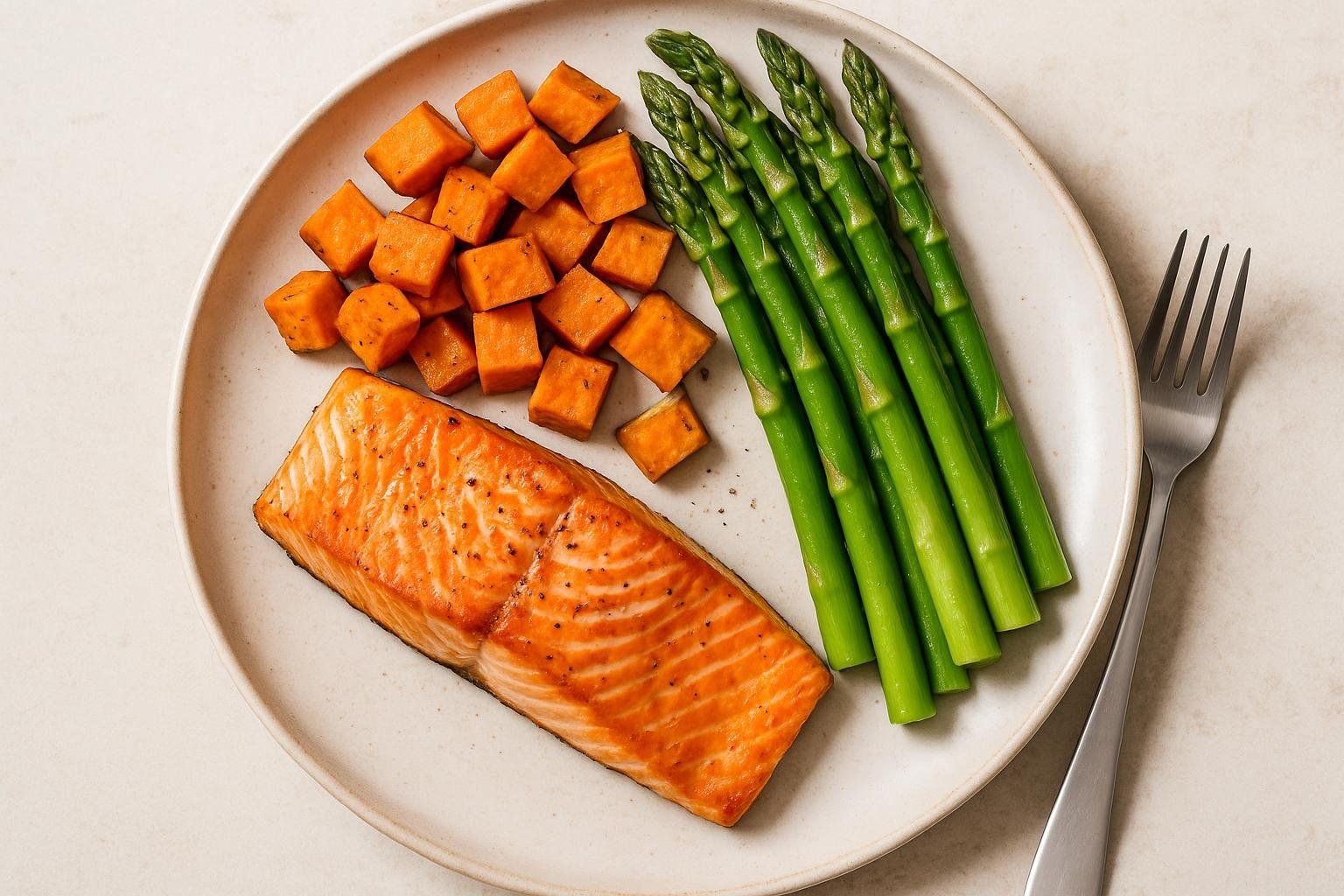
Workout templates: 4 and 6 weeks, by level
How to use these plans
- Choose your level. If in doubt, start at Beginner for 4 weeks.
- Use loads that leave 1–2 reps “in reserve” (RIR, meaning you stop 1–2 reps shy of failure) on most sets. Take your final set within 0–1 RIR on key lifts.
- Progression: Add 2.5–5 lb to upper-body lifts and 5–10 lb to lower-body lifts when you hit the top of the rep range with solid form.
- Weekly volume target: 10–16 hard sets per muscle group.
Beginner (3 days/week) — 4 weeks
| Day (Focus) | Exercise | Sets | Reps |
|---|---|---|---|
| Day 1: Full Body 1 | Goblet squat | 3 | 10–12 |
| Day 1: Full Body 1 | Machine or cable row | 3 | 10–12 |
| Day 1: Full Body 1 | Dumbbell bench press | 3 | 8–12 |
| Day 1: Full Body 1 | Romanian deadlift | 3 | 8–10 |
| Day 1: Full Body 1 | Half-kneeling cable chop | 3 | 10/side |
| Day 2: Full Body 2 | Leg press | 3 | 10–12 |
| Day 2: Full Body 2 | Lat pulldown | 3 | 8–12 |
| Day 2: Full Body 2 | Seated DB shoulder press | 3 | 8–12 |
| Day 2: Full Body 2 | Bodyweight split squat | 3 | 8–10/side |
| Day 2: Full Body 2 | Plank | 3 | 30–45 sec |
| Day 3: Full Body 3 | Step-up or reverse lunge | 3 | 8–10/side |
| Day 3: Full Body 3 | Chest-supported row | 3 | 10–12 |
| Day 3: Full Body 3 | Incline DB press | 3 | 8–12 |
| Day 3: Full Body 3 | Glute bridge or hip thrust | 3 | 10–12 |
| Day 3: Full Body 3 | Farmer carry | 3 | 30–45 sec |
Optional weeks 5–6: Repeat, adding a set to your first two exercises each day.
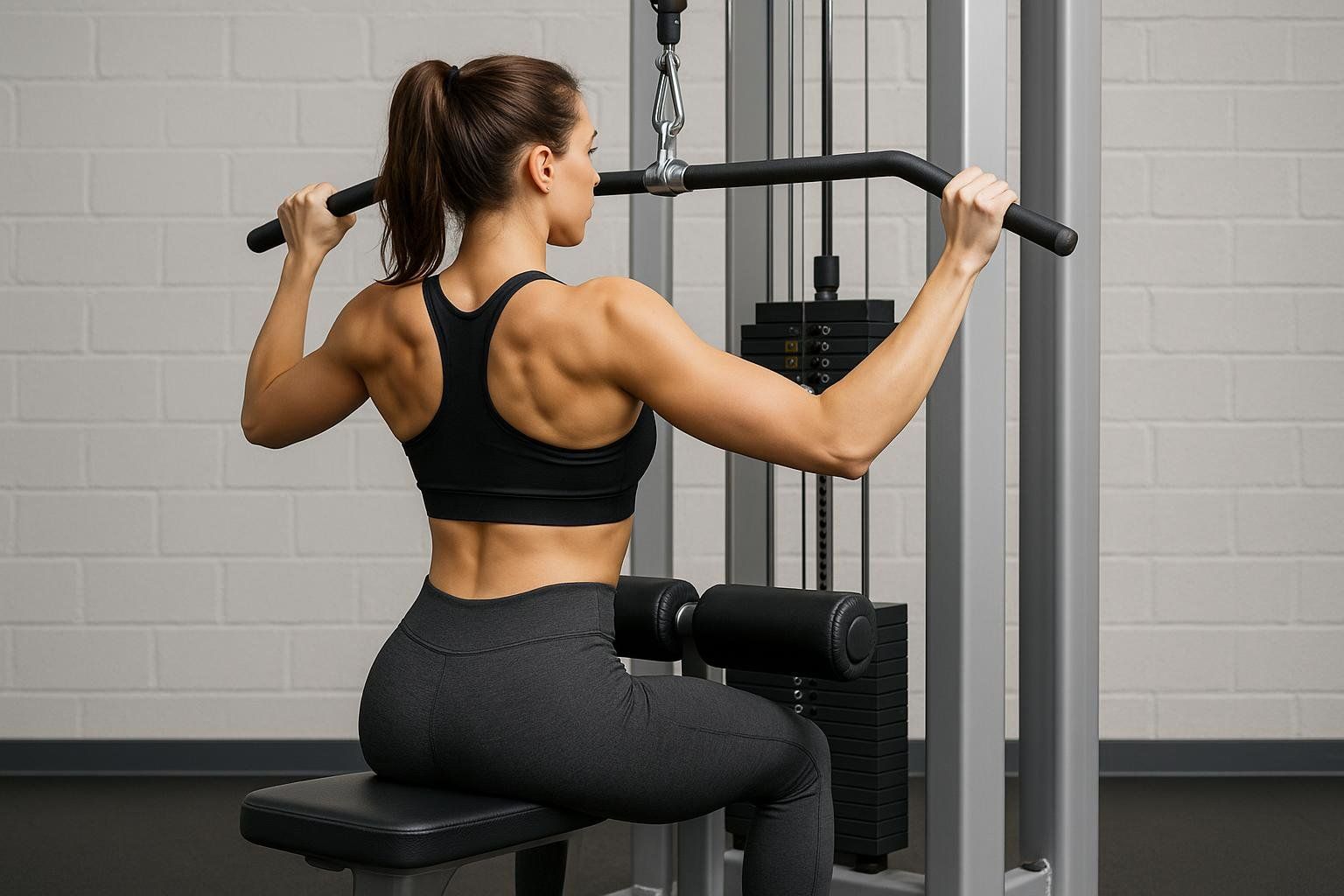
Intermediate (Upper/Lower, 4 days/week) — 6 weeks
| Day (Focus) | Exercise | Sets | Reps |
|---|---|---|---|
| Day 1: Upper (Push-Pull Strength) | Bench press | 4 | 6–8 |
| Day 1: Upper (Push-Pull Strength) | One-arm dumbbell row | 4 | 8–10/side |
| Day 1: Upper (Push-Pull Strength) | Seated DB shoulder press | 3 | 8–10 |
| Day 1: Upper (Push-Pull Strength) | Lat pulldown or pull-ups | 3 | 8–10 |
| Day 1: Upper (Push-Pull Strength) | Cable lateral raise | 3 | 12–15 |
| Day 2: Lower (Squat Pattern) | Back squat or safety-bar squat | 4 | 5–7 |
| Day 2: Lower (Squat Pattern) | Romanian deadlift | 3 | 6–8 |
| Day 2: Lower (Squat Pattern) | Walking lunge | 3 | 10/side |
| Day 2: Lower (Squat Pattern) | Leg curl | 3 | 10–12 |
| Day 2: Lower (Squat Pattern) | Calf raise | 3 | 12–15 |
| Day 3: Upper (Accessory Volume) | Incline DB press | 4 | 8–10 |
| Day 3: Upper (Accessory Volume) | Chest-supported row | 4 | 8–10 |
| Day 3: Upper (Accessory Volume) | Close-grip push-up or dips | 3 | To 1–2 RIR |
| Day 3: Upper (Accessory Volume) | Face pull | 3 | 12–15 |
| Day 3: Upper (Accessory Volume) | Cable curl | 3 | 10–12 |
| Day 4: Lower (Hinge Pattern) | Deadlift or trap-bar deadlift | 3 | 3–5 |
| Day 4: Lower (Hinge Pattern) | Bulgarian split squat | 3 | 8–10/side |
| Day 4: Lower (Hinge Pattern) | Leg press | 3 | 10–12 |
| Day 4: Lower (Hinge Pattern) | Back extension | 3 | 12–15 |
| Day 4: Lower (Hinge Pattern) | Hanging knee raise | 3 | 8–12 |
Progression: Add a rep each week within the range, then add load and reset to the lower end.
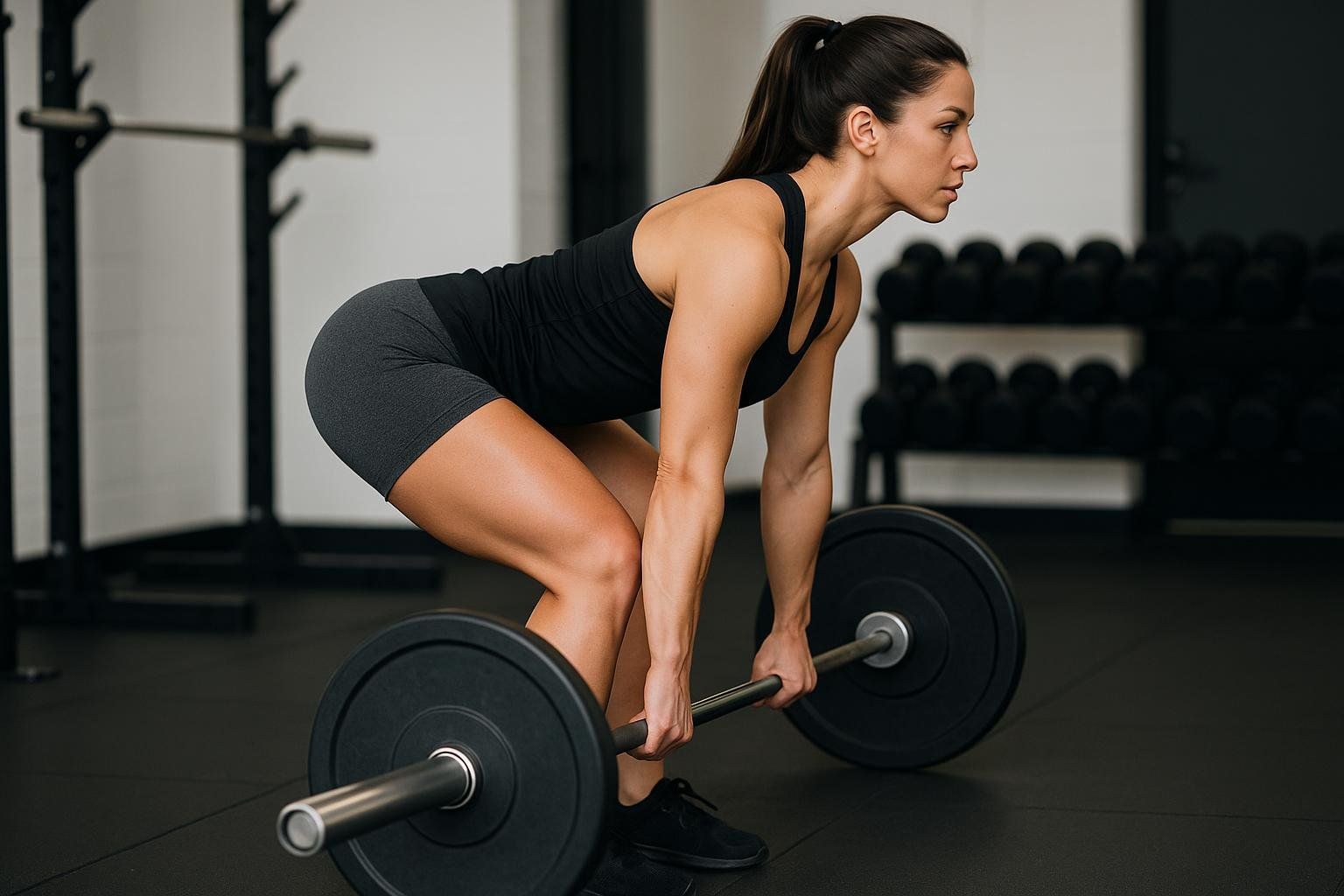
Advanced (5 days/week) — 6 weeks, specialization emphasis
Goal: Prioritize 1–2 lagging muscle groups (e.g., glutes and back) while maintaining others.
| Day (Focus) | Exercise | Sets | Reps |
|---|---|---|---|
| Day 1: Lower (Quad Focus) | Back squat or front squat | 5 | 4–6 |
| Day 1: Lower (Quad Focus) | Leg press | 4 | 8–10 |
| Day 1: Lower (Quad Focus) | Walking lunge | 3 | 10/side |
| Day 1: Lower (Quad Focus) | Leg extension (2–3 sec squeeze) | 3 | 12–15 |
| Day 1: Lower (Quad Focus) | Standing calf raise | 4 | 10–12 |
| Day 2: Upper (Push) | Bench press | 5 | 4–6 |
| Day 2: Upper (Push) | Incline DB press | 4 | 8–10 |
| Day 2: Upper (Push) | Seated DB shoulder press | 3 | 8–10 |
| Day 2: Upper (Push) | Cable fly | 3 | 12–15 |
| Day 2: Upper (Push) | Overhead cable triceps extension | 3 | 10–12 |
| Day 3: Lower (Glute/Ham Focus) | Deadlift or trap-bar deadlift | 4 | 3–5 |
| Day 3: Lower (Glute/Ham Focus) | Hip thrust | 4 | 8–10 |
| Day 3: Lower (Glute/Ham Focus) | Romanian deadlift | 3 | 6–8 |
| Day 3: Lower (Glute/Ham Focus) | Cable glute kickback | 3 | 12–15/side |
| Day 3: Lower (Glute/Ham Focus) | Seated calf raise | 4 | 12–15 |
| Day 4: Upper (Pull) | Weighted pull-up or lat pulldown | 4 | 6–8 |
| Day 4: Upper (Pull) | Chest-supported row | 4 | 8–10 |
| Day 4: Upper (Pull) | One-arm cable row | 3 | 10–12/side |
| Day 4: Upper (Pull) | Face pull | 3 | 12–15 |
| Day 4: Upper (Pull) | Incline DB curl | 3 | 10–12 |
| Day 5: Full Body (Power/Hypertrophy) | Front squat or goblet squat | 4 | 5–7 |
| Day 5: Full Body (Power/Hypertrophy) | Push press | 4 | 4–6 |
| Day 5: Full Body (Power/Hypertrophy) | Pendlay row | 4 | 6–8 |
| Day 5: Full Body (Power/Hypertrophy) | DB Romanian deadlift | 3 | 8–10 |
| Day 5: Full Body (Power/Hypertrophy) | Farmer carry | 3 | 40–60 sec |
Advanced progression and fatigue management

- Week 1: Start at the low end of each rep range; build 1 rep per set weekly.
- Week 4–5: Add small load jumps (2.5–5 lb upper, 5–10 lb lower) and reset to low end of the range.
- Week 6: Deload (reduce sets by ~40–50% and stop at 2–3 RIR) if fatigue, sleep, or performance declines.
Related reads and tools
- New to strength training? Strength Training for Beginners
- Want glute-focused growth? Guide to Glute Growth
- Efficient home sessions? Home Workout for Beginners (4-week plan)
Supplements that actually help (and how to dose them)
- Creatine monohydrate: 3–5 g daily. Supports high-intensity performance and lean mass; safe for healthy adults, including women. Small weight uptick is mostly intramuscular water, which helps training.
- Beta-alanine: 4–6 g daily (split into smaller doses). Increases muscle carnosine and can improve performance in efforts lasting ~1–4 minutes; transient tingling is common and harmless.
- Protein powder: Practical for hitting daily targets; prioritize total daily protein first.
Other supplements like caffeine (for performance) and omega-3s (for general health) can be useful depending on your specific goals and diet.
Always review supplements with your physician or a registered dietitian if you have medical conditions or take prescription meds.
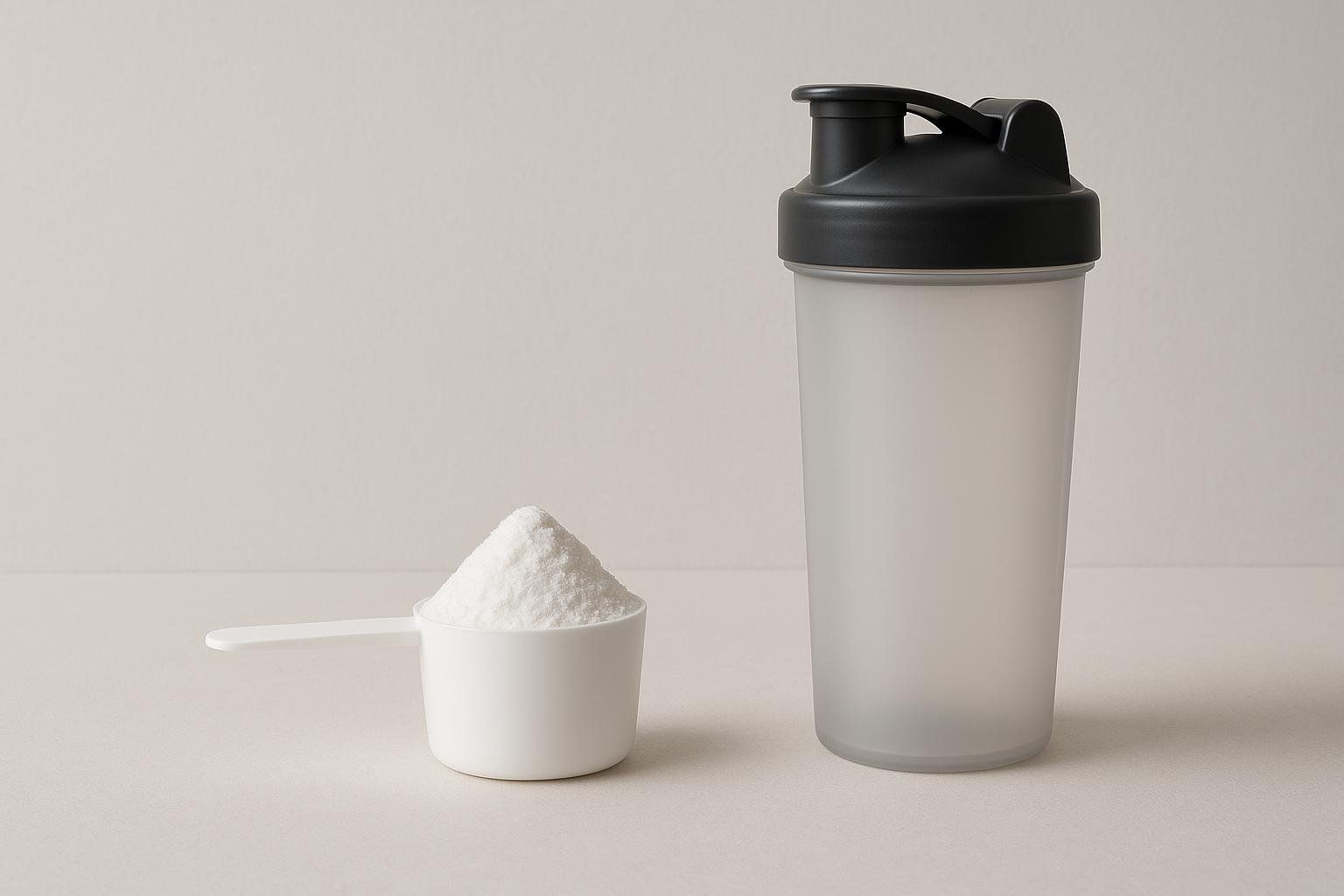
For a broader overview, see NASM’s evidence-based supplement roundup for women.
Menopause and muscle: build strength, protect bone
Estrogen’s decline can accelerate muscle loss and raise fracture risk. A key strategy to counteract this is a consistent resistance-training plan—ideally at moderate-to-high intensity—plus adequate protein and vitamin D/calcium from diet or supplements as advised by your clinician.

- Resistance training three days per week improves bone mineral density at the spine and hip in postmenopausal women; intensities ≥70% 1RM are particularly effective in longer programs (systematic review and meta-analysis).
- Recommended daily intakes for women 51+ include:
- Calcium: ~1,200 mg/day
- Vitamin D: 600–800 IU/day (higher end for 71+)
- Upper limits: ~2,000 mg/day calcium; 4,000 IU/day vitamin D
Always confirm your individual needs with your clinician.
- Higher training volumes are well tolerated when progressed gradually; joint-friendly exercise selection and machine variations help on achier days.
Start here if you’re 50+: Building Muscle After 50: Science-Backed Guide
How to eat for your goal (quick-start)
Pick one path for the next 4–8 weeks, then reassess with DEXA.
- Recomp (lose fat + gain/maintain muscle): Eat at maintenance to a small deficit (−250 to −400 kcal), protein 1.6–2.2 g/kg, lift 3–5 days/week, walk daily. Details: Body Recomposition 101.
- Lean gain (prioritize muscle): Small surplus (+5–10% calories), protein 1.6–2.2 g/kg, carbs centered around training, 4–5 lifting sessions/week. Details: Lean Bulk Essentials.
Meal-building template (per meal)
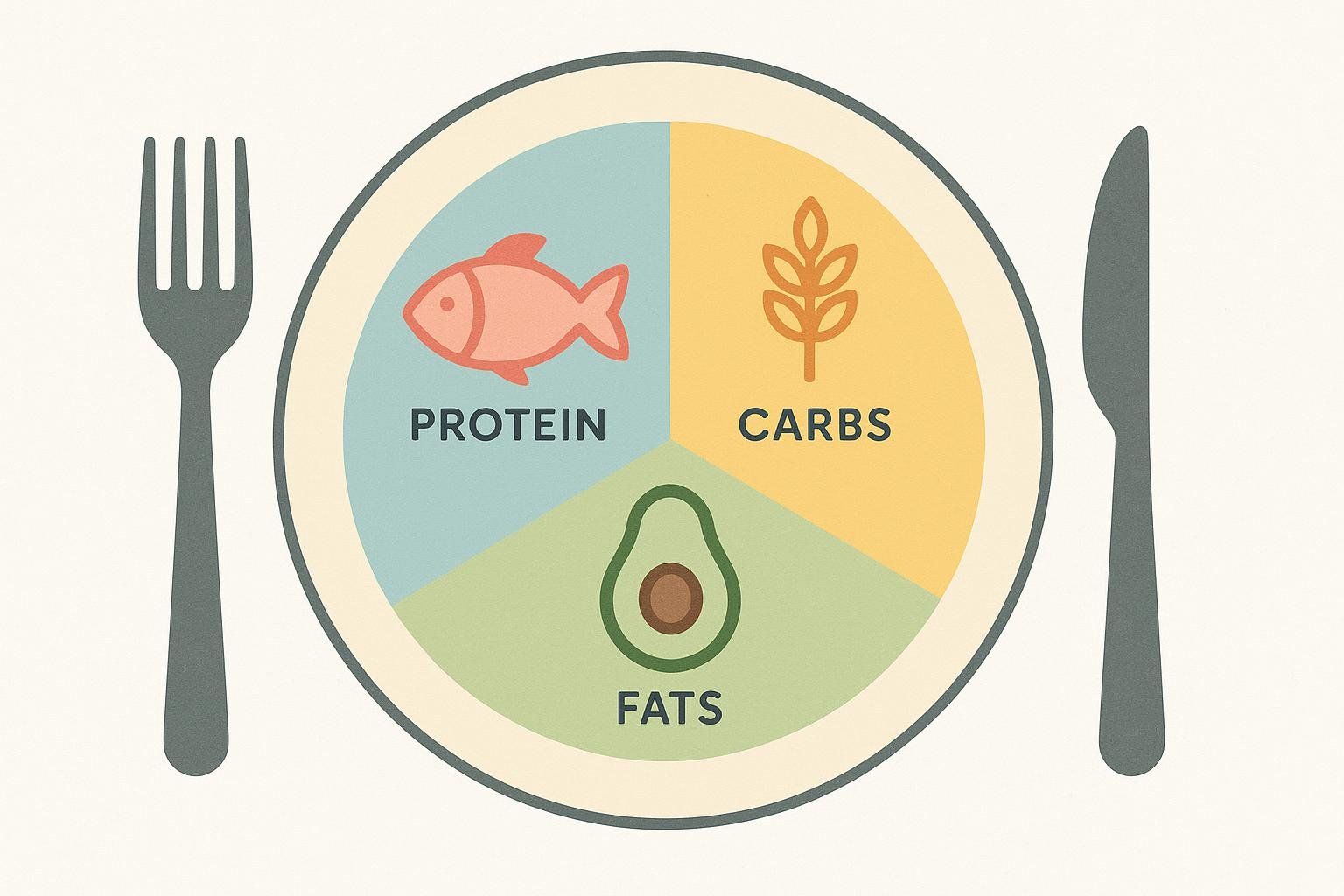
- Protein: 25–40 g (chicken, Greek yogurt, tofu, eggs, fish)
- Carbs: fruit/whole grains, timing around training
- Fats: olive oil, avocado, nuts/seeds
- Vegetables: 1–2 fists of veggies per meal
Track what matters: DEXA > scale
Progress isn’t just pounds. DEXA shows:
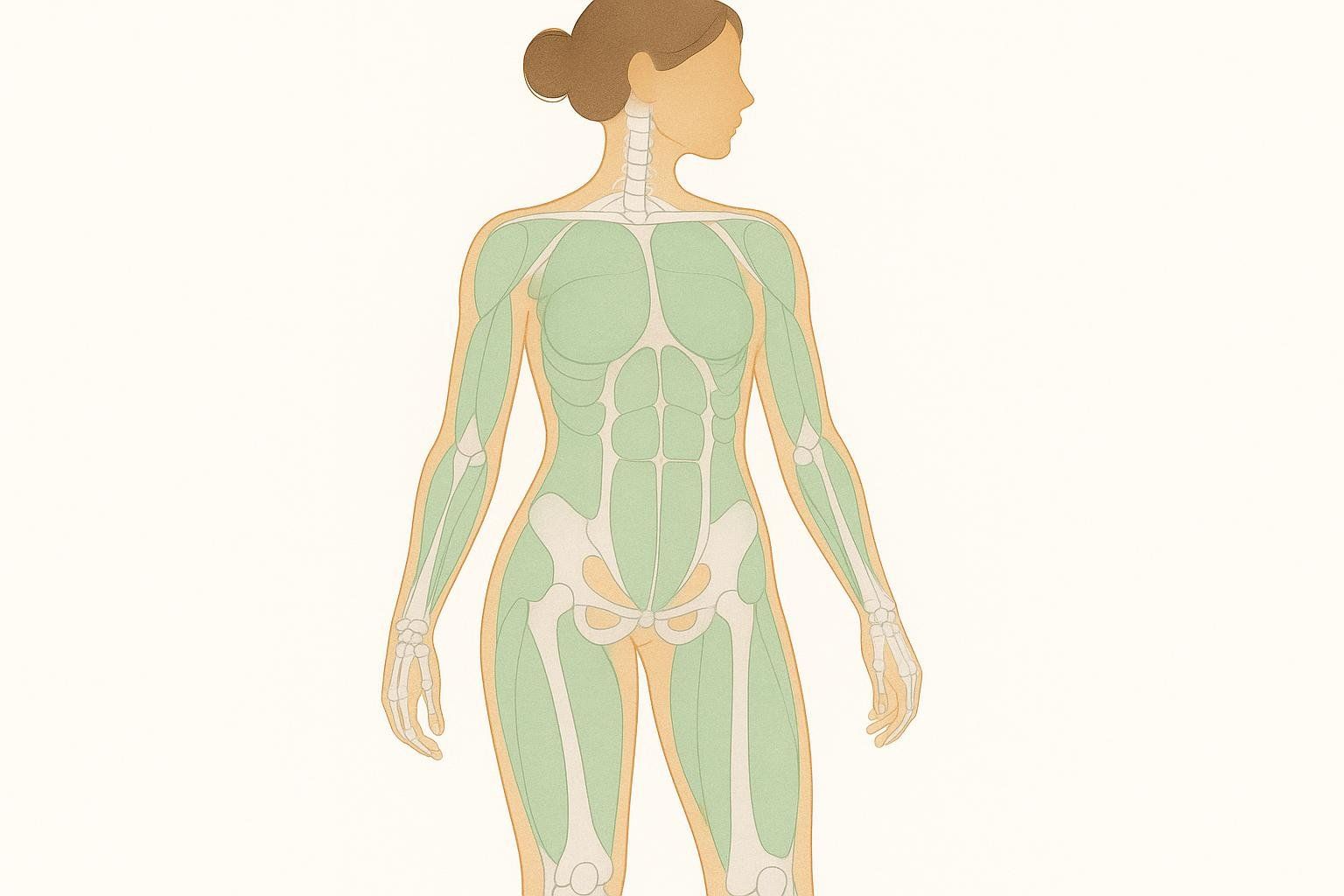
- Total and regional lean mass (did your legs, glutes, or lats actually grow?)
- Fat mass and visceral fat (central health risk)
- Bone density (especially helpful around menopause)
Book a baseline scan, follow one template for 4–8 weeks, then re-scan to confirm the plan is working. Keep prep consistent to improve scan-to-scan precision (how to prep for a scan).
FAQs
Do women need different exercises than men?
Not necessarily. The same big movement patterns—squat, hinge, push, pull, carry—work for everyone. Program adjustments reflect your goals, recovery, and preferences, not your sex.
How fast can I expect results?
Strength often jumps within 4–6 weeks; visible muscle changes typically appear by 8–12 weeks with adequate protein and progressive overload. Consider re-scanning with DEXA each quarter to verify lean mass gains.
Should I train around my menstrual cycle?
There’s no universal cycle-based protocol that reliably boosts hypertrophy. Pay attention to your symptoms and adjust intensity or exercise selection accordingly.
What are the best rep ranges for muscle?
You can build muscle across a wide rep spectrum if you train close to fatigue and accumulate enough hard sets. Most of your work can live in the 6–12 rep range; mix in lower and higher reps for variety.
Will creatine make me puffy or bloated?
Creatine can add a couple of pounds of water—mostly inside the muscle cell, which improves performance. It doesn’t increase body fat and is safe for healthy adults.
Get Started: Your 3-Step Plan
- Pick a template above and put weeks 1–4 on your calendar.
- Set protein targets that match your weight and stock your kitchen.
- Book your DEXA scan now to lock in your baseline—and consider re-scanning in 8–12 weeks to see your lean mass move. For more on accuracy and prep, see the DEXA Accuracy Guide.
